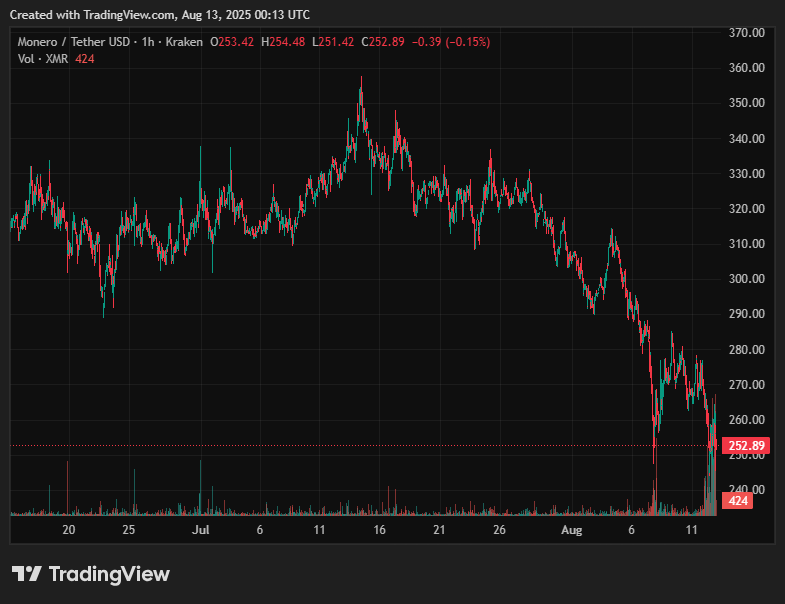- The Layer-1 blockchain Qubic claims it successfully executed a 51% attack on Monero’s network, which resulted in a six-block reorganisation and replaced 60 previously confirmed blocks.
- Qubic’s attack was a “high-stakes technical confrontation” that involved incentivising Monero CPU mining through its own network to gain control of the majority hashrate.
- The claim has sparked debate in the crypto community, with some developers casting doubt on the validity of the attack while others acknowledge the potential security implications for Monero.
Wild times we are living in, where a renowned crypto protocol attacks another renowned crypto protocol for “experimental” and “strategic” purposes.
We’re talking about Qubic, a layer-1 chain that now claims to have successfully gained 51% of the Monero network’s hashrate—a feat possible in Proof-of-Work (PoW) systems like Bitcoin’s (BTC).
Related: Trump-Linked Crypto Firm Eyes US$1.5B Public Offering for Token Holdings
It Was Just an Experiment, Says Qubic
In a blog post, Qubic described the effort as a “high-stakes technical confrontation” that concluded with a six-block-deep chain reorganisation, replacing 60 previously confirmed blocks with an alternate chain.
In PoW blockchains, a 51% dominance means the attacker(s) in control can rewrite transaction history, block specific inbound transactions, and conduct double-spend attacks. While such scenarios have long been discussed in theory, Qubic’s claim has forced Monero’s developer and mining communities to reassess whether the network’s decentralisation is as durable as assumed.
This definitely stirred the pot, causing a debate amongst developers.
Some, like Luke Parker, lead developer at SeraiDEX, said on X that a reorganisation of that depth (as Qubic recorded and claimed) “does not mean a ‘51 % attack’ was successful”, but rather that “an adversary with a high amount of hash got lucky”.
Others disagreed. SlowMist co-founder Zhong Chenming argued the attack “seems to have succeeded” and, in theory, gives Qubic the power to rewrite the chain, double-spend, or censor transactions, albeit at significant cost and with unclear economic benefit.
It’s Been Going For a While
The confrontation traces back to June 30, when Qubic began incentivising Monero CPU mining through its own network. The mined XMR would be used to fund Qubic token buybacks and burns, effectively redirecting its computing power toward Monero’s network.
Sergey Ivancheglo, founder of Qubic as well as NXT and Iota, openly acknowledged the takeover attempt, stating that once it controlled most of the hashrate, Qubic would reject blocks from other pools.
Monero’s community pushed back in late July, allegedly launching a distributed denial-of-service attack on Qubic’s mining pool. During the reported six-hour disruption, pool hashrate plunged from 2,6 GH/s to 0,8 GH/s.
And yes, the XMR token took a dive, currently trading at US$252.7 (AU$368), down 5.2% on the daily chart and over 24% in the last 30 days.
Related: Bigger Than Saylor: Steak ‘n Shake Sizzles with 10.7% Sales Jump as Bitcoin Becomes a “Game Changer”
The post Qubic Claims 51% Control of Monero in Alleged Month-Long Blockchain Showdown appeared first on Crypto News Australia.




